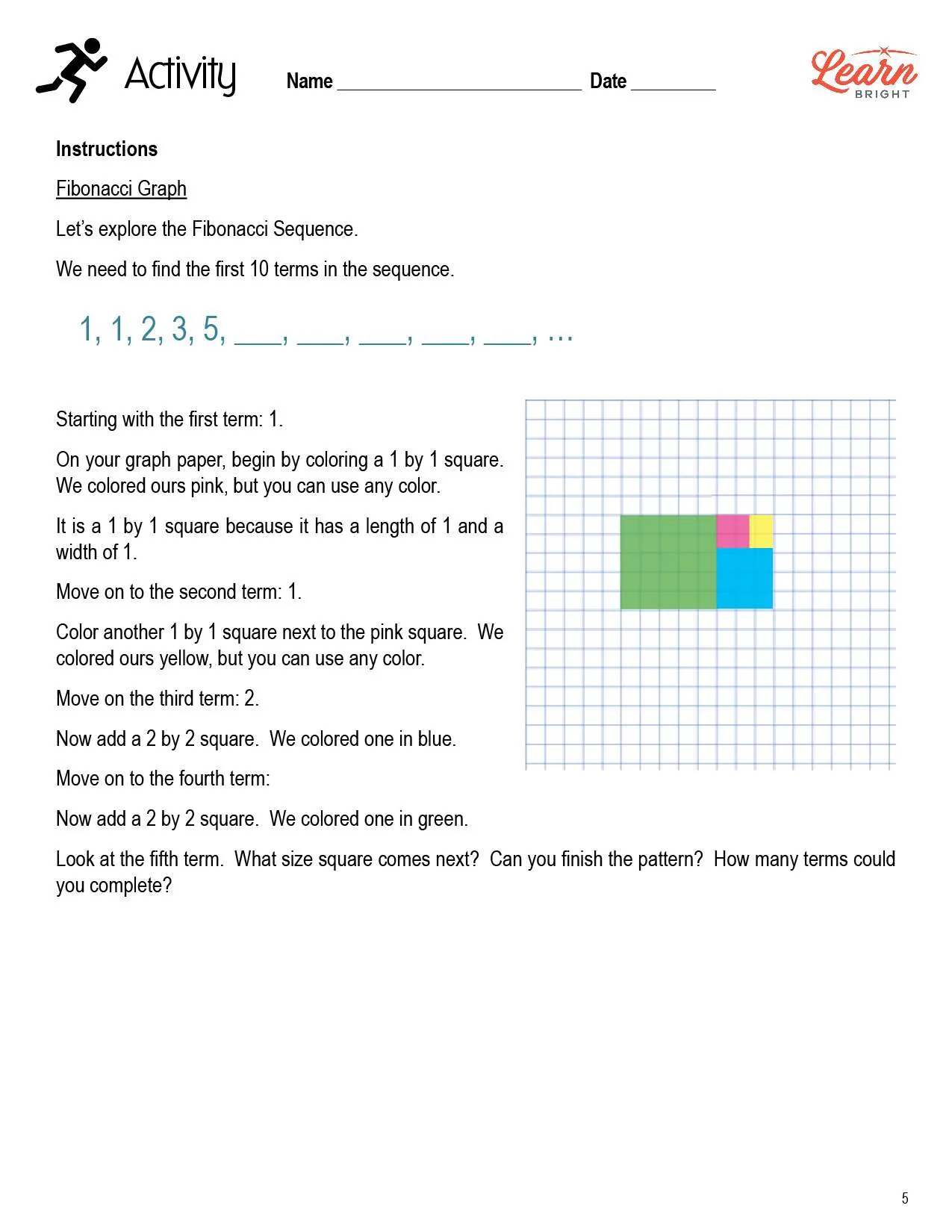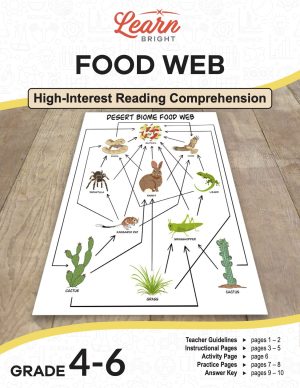Description
What Our Number Patterns lesson plan includes
Lesson Objectives and Overview: Number Patterns helps students identify mathematical patterns and introduces them to related vocabulary, such as set, term, and rule. The lesson contains multiple examples to help students find a pattern and then determine the rule for the pattern. At the end of the lesson, students will be able to understand patterns in the world around them as well as create and continue mathematical patterns. This lesson is for students in 4th grade, 5th grade, and 6th grade.
Classroom Procedure
Every lesson plan provides you with a classroom procedure page that outlines a step-by-step guide to follow. You do not have to follow the guide exactly. The guide helps you organize the lesson and details when to hand out worksheets. It also lists information in the blue box that you might find useful. You will find the lesson objectives, state standards, and number of class sessions the lesson should take to complete in this area. In addition, it describes the supplies you will need as well as what and how you need to prepare beforehand.
Options for Lesson
Included with this lesson is an “Options for Lesson” section that lists a number of suggestions for activities to add to the lesson or substitutions for the ones already in the lesson. One optional addition to this lesson is to have your students explore patterns in the world around them by creating a photo journal of patterns in the school. If you have more advanced students, you can introduce them to symmetry and radial symmetry in patterns. Finally, you could have your students present a paper on the life of Fibonacci.
Teacher Notes
The teacher notes page includes lines that you can use to add your own notes as you’re preparing for this lesson.
NUMBER PATTERNS LESSON PLAN CONTENT PAGES
Number Patterns
The Number Patterns lesson plan includes two content pages. There are patterns all around us! You can find them in art, floor tiles, plants, and in many other places. Math also has many patterns. You might already know some of these patterns, like any number multiplied by 0 equals 0. This is a math pattern and is also a mathematical property. Mathematical patterns follow certain rules.
The rule for a math pattern tells you what to do with your starting number. For example, a rule might tell you to start at 4, then multiply by two and add one. The first three numbers of this pattern would be 4*2 + 1 = 9, 9*2 + 1 = 19, and 19*2 + 1 = 39.
Sometimes, you need to find the numbers that come next when using a rule. Other times, you need to find the rule based on a set of numbers.
We call a group of numbers that follow a pattern the set. Each number inside a set is a term. The pattern that the set follows is the rule. We can write rules verbally or algebraically. Sets end with an ellipsis (…) to show that the pattern continues to infinity.
How to Find a Pattern
If you need to find a pattern using a set of numbers, you first need to look at the first two numbers in the set. For example, let’s look at the a set: { 1, 7, 13, 19, 25, … }. The first two numbers are 1 and 7. How do you get from 1 to 7? One way is to add 6. Next, look at the second and third numbers in the set, 7 and 13. To get from 7 to 13, you add 6. To go from the first to second number and the second to third number, you add 6! If you see the same change, as you do in this example, this might be your pattern. However, you need to check the other numbers to make sure the rule applies for every term in the set.
When we check the other numbers, we see that the rule is true for the whole set. This means that we’ve found the rule! To write the rule, we can write it verbally (add 6) or algebraically (n + 6).
You will often need to find the next three numbers in a sequence. Using the rule, we can find the next three numbers by adding 6: 25 + 6 = 31 , 31 + 6 = 37, and 37 + 6 = 42. The next three terms are {31, 37, 42}. Notice that the solution is used as the beginning number for the next term.
Let’s look at another pattern: {90, 80, 70, 60, 50…}. The first two terms are 90 and 80. How do you get from 90 to 80? You subtract 10. Next, look at the second and third terms: 80 and 70. To get from 80 to 70, you also subtract 10. Now that we think we’ve identified the rule, we check the rest of the terms and see that it works for all of the terms. Therefore, our rule is subtract 10 (written verbally) or n – 10 (written algebraically). Following the rule, the next three terms are {40, 30, 20}.
We can make number patterns using any mathematical operation – addition, subtraction, multiplication, division, exponents, square roots, and many more!
Fibonacci Sequence
Long ago, people discovered that math is all around us, even in nature. Scientists found math patterns when they looked at seed pods, flower petals, and even pineapples.
The Fibonacci Sequence is a set of terms where we add the two previous terms to make the next term. Let’s begin at the number 0. The next number is 1. We then add 0 + 1 to get 1. Now, the pattern is 0, 1, 1. Add the last two numbers (1 and 1) together to get 2. Now the pattern is 0, 1, 1, 2. Again, add the last two numbers (1 and 2) to get 3. Now the pattern is 0, 1, 1, 2, 3. Keep following this rule to find the rest of the set!
NUMBER PATTERNS LESSON PLAN WORKSHEETS
The Number Patterns lesson plan includes four worksheets: an activity worksheet, a practice worksheet, a homework assignment, and a quiz. You can refer to the guide on the classroom procedure page to determine when to hand out each worksheet.
FIBONACCI GRAPH ACTIVITY WORKSHEET
For the activity worksheet, students will explore the Fibonacci Sequence by finding the first 10 terms in the sequence. They will follow the instructions on the worksheet to use graph paper to create the pattern. They will then analyze the pattern and use it to determine the next terms in the sequence.
FIND THE RULE PRACTICE WORKSHEET
The practice worksheet asks students to first find the rule and complete the next three terms in five patterns. Next, they will solve a “Threebinacci,” creating a sequence of terms that produces the next term by adding the previous three numbers together. Finally, they will create their own “Threebinacci,” starting with any three numbers they want. They will write our their sequence and the rule for obtaining the next number.
NUMBER PATTERNS HOMEWORK ASSIGNMENT
For the homework assignment, students will find an example of a pattern in seven of the ten categories listed on the worksheet (art, music, architecture, food, nature, animal or insect, fabric, shell, at school, and in your neighborhood). They will print out photos to support their examples.
QUIZ
This lesson also includes a quiz that you can use to test students’ understanding of the lesson material. For the quiz, students will find the next three terms in three sequences.
Worksheet Answer Keys
This lesson plan includes answer keys for the practice worksheet and the quiz. If you choose to administer the lesson pages to your students via PDF, you will need to save a new file that omits these pages. Otherwise, you can simply print out the applicable pages and keep these as reference for yourself when grading assignments.









